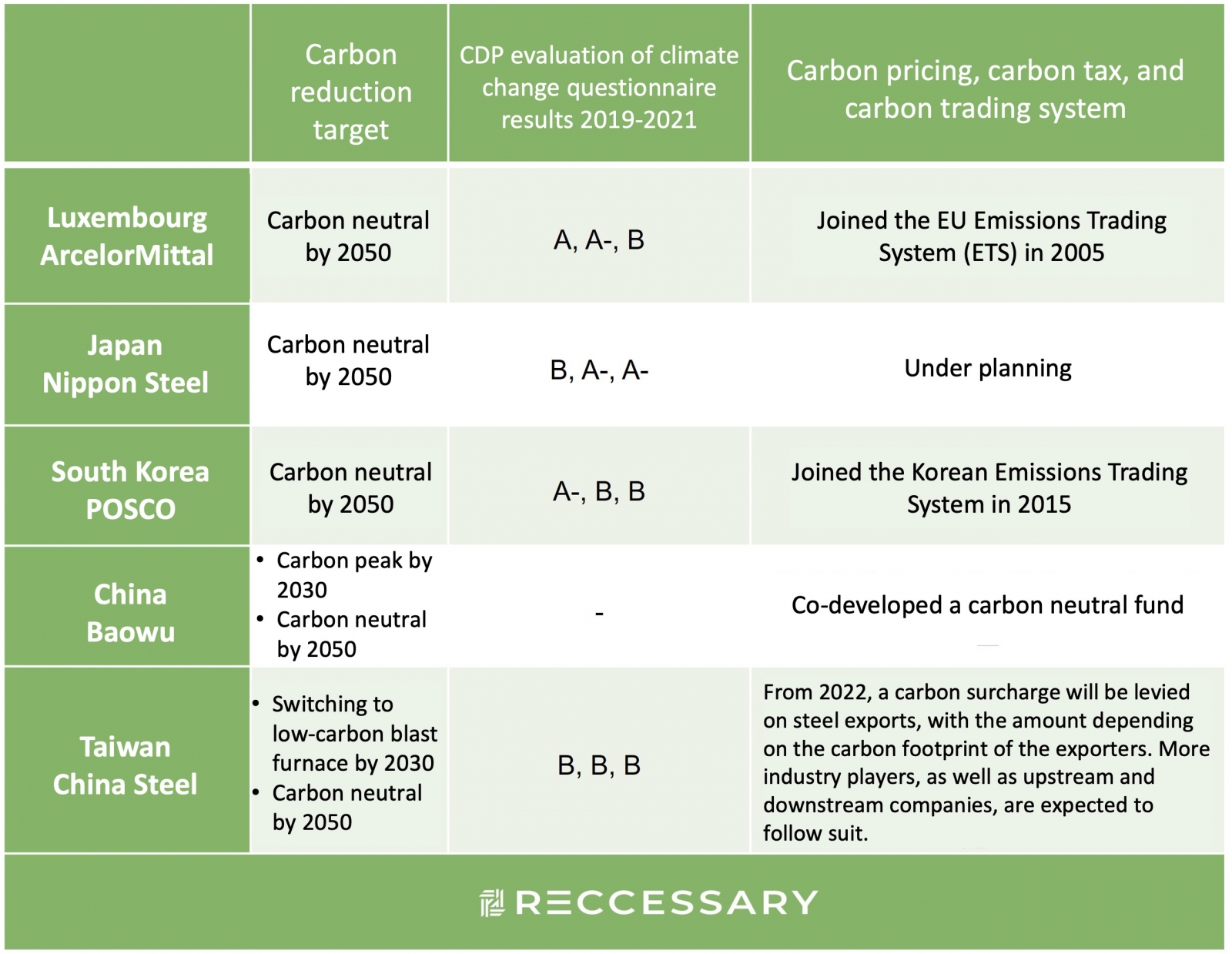Global emissions of the steel industry
The steel industry produces about 3 billion tonnes of CO2 per year, accounting for 9% of the world's total. The production of one ton of steel generates about 1.7 to 1.8 metric tonnes of carbon emissions, about 1.8 to 2.2 metric tonnes when using blast furnaces, 0.4 to 0.8 metric tonnes when using electric furnaces, and 0.1 metric tonnes when using hydrogen energy. According to the World Steel Association, carbon emissions per ton of steel averaged 1.89 metric tonnes in 2020.
China
The steel industry is the largest carbon emitter in China’s manufacturing sector, accounting for 15% of the national total, with 90% of steel produced using blast furnaces. In 2019, 15 major steel companies jointly signed and released the "Declaration on Green Development of Chinese Steel Enterprises," hoping to achieve energy transition through various new technologies.
United States
The U.S. steel industry accounts for 24% of its national carbon emissions, second only to the cement industry.
Japan
In Japan, the steel industry dominates the nation’s total emissions, making it the most carbon-intensive of the manufacturing sector.
In addition, The Climate Group[1] and ResponsibleSteel[2] have jointly launched the SteelZero initiative, which requires participants to commit to purchasing carbon neutral steel by 2050, with the goal of stimulating investment in net-zero manufacturing processes in the steel industry.
Carbon reduction plans of steel companies

Carbon reduction approaches for steelmaking
Hydrogen steelmaking
The process heats iron oxide with hydrogen instead of coke and natural gas to remove oxygen. While this approach avoids most of the carbon emissions from steelmaking, the production of hydrogen incurs energy costs, as it relies on cheap natural gas as its source. Although there are methods with low carbon emissions, such as electrolysis, they are not widely used due to high electricity costs (more than half the total cost). In addition, the fact that hydrogen is not as transportable as traditional fossil fuels and the high cost of its storage facilities hinder the use and promotion of hydrogen in steelmaking.
Electric arc furnace
Electric arc furnace (EAF) steelmaking dominates 30% of global steel production. EAF uses high voltage electric currents as the primary heat source to melt down steel scrap and iron ore to produce crude steel, which enables resource recycling.
Low carbon blast furnace
This approach replaces blast furnace auxiliary fuel from pulverized coal with hydrogen-containing gas, and replaces part of the iron-containing raw materials with hydrogen-reduced iron. CO and CO2 produced during the process are repurposed to make chemical products, namely steel and chemical co-production.
Electrolysis steelmaking
The electrolytic steelmaking technology developed by Boston Metals uses electric current to heat and melt down iron ore. Electric current will be injected from the top of the cylinder, conducted through a chromium alloy tube, and enter a solution of iron oxide and other metallic minerals, allowing for oxygen atom separation and liquid iron production. Liquid iron settles at the bottom of the cylinder and solidifies into steel. The whole process emits only oxygen and no greenhouse gases, which can achieve net-zero if using renewable energy.
Emissions factor
The emissions factors announced by the World Steel Association (WSA) are as follows:
.jpg)
[1] The Climate Group is a global climate change organization that helps companies reduce carbon through initiatives such as RE100.
[2] ResponsibleSteel is an international certification standard for net zero steel.
Source
- CDP, 2021
- “The challenge of 'greening' the steel industry: How to move towards net zero for an industry that contributes 9% of global carbon emissions?”, Business Today
- "Carbon dioxide recovery technology: carbon emissions as energy for textile processes", Industrial Sustainable Development Clearinghouse of ITRI
- Lange Steel
- “Nippon Steel commits to zero greenhouse gas emissions by 2050”, Taiwan Trade Center, Fukuoka